Play and Vulnerability
An exploration of play, vulnerability and intimacy
2022
Role: Designer
Collaboration: Pratt Institute, USA
Keywords: jenga, sensory ethnography research
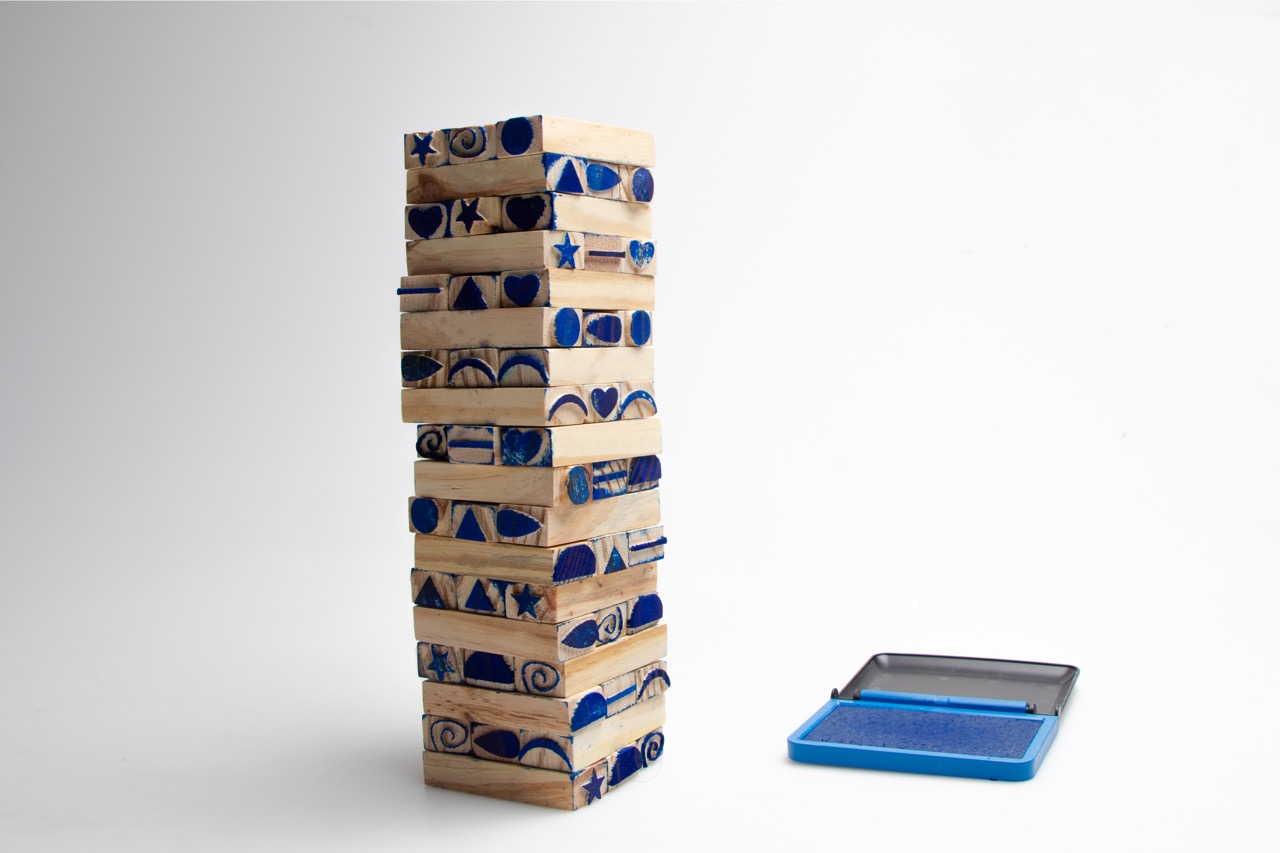
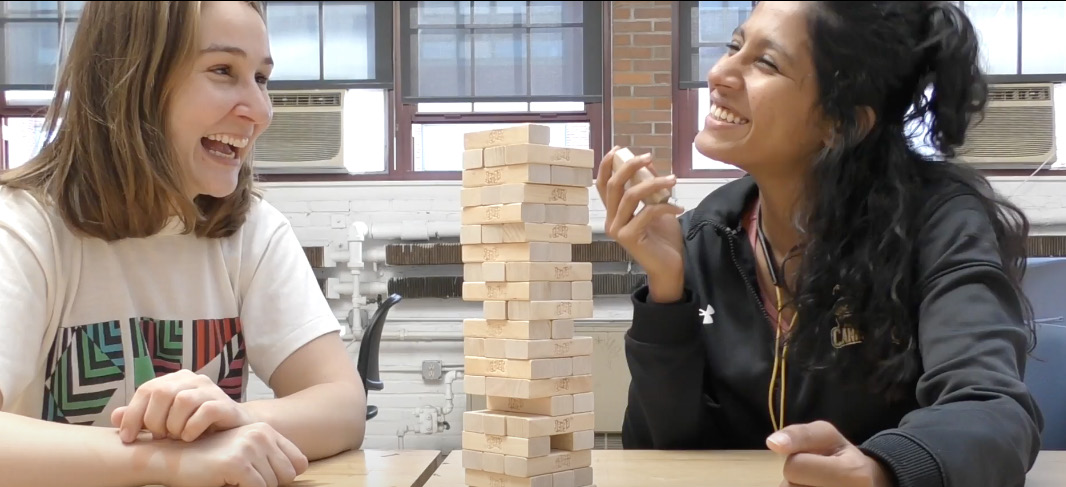
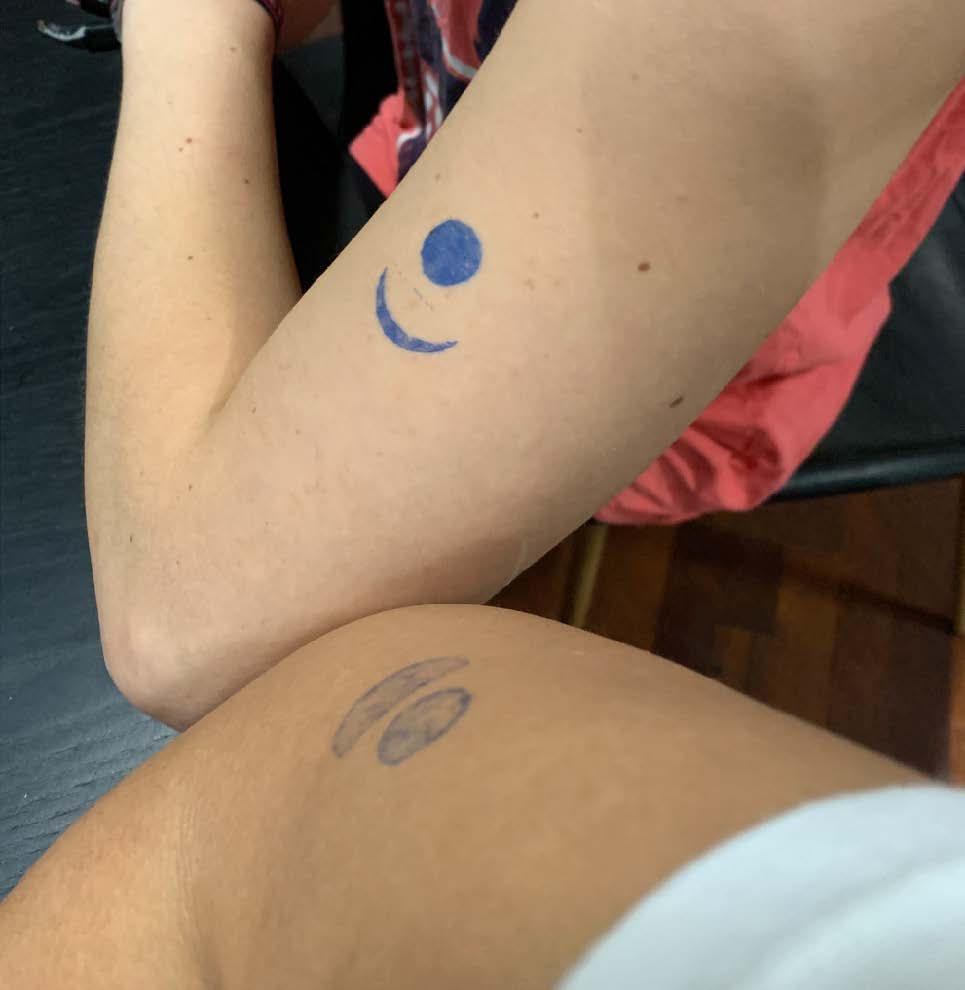
Introduction
It is common to hear people downplay a serious situation, e.g. cancer or scars, or jokingly talk about death or trauma in front of others. Vulnerability is the feeling of being exposed and unable to withstand the effects of a hostile environment (Cipolla, 2018). If downplay is a play behaviour, does play create a safe place for vulnerability? Does play allow people unconsciously let go of emotional baggage? Can play be used as a method to invite vulnerability more easily?
This project collaborated with Pratt institute, New York. I was paired with a communication designer and conducted play-inspired experimentations over 6 weeks. The jenga stamp experiments are predominantly conducted by me.
This project collaborated with Pratt institute, New York. I was paired with a communication designer and conducted play-inspired experimentations over 6 weeks. The jenga stamp experiments are predominantly conducted by me.
Jenga Questions and Stamps
Inspired by a conversation with my friend, Jenga is the most popular sensory toy at her therapy session with children who have traumatic background. We developed Jenga questions and stamps.
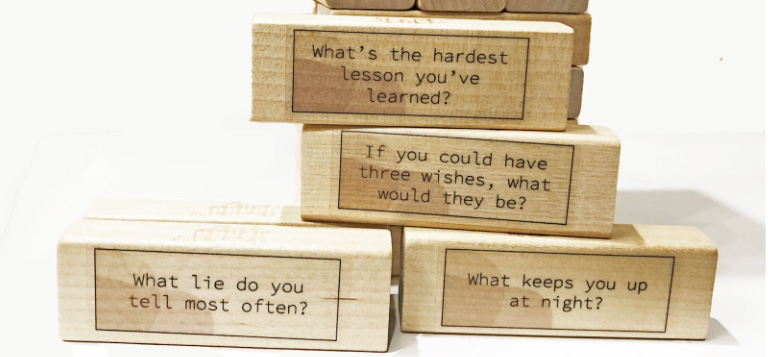
Jenga questions. Focus on sharing of stories, explores emotional vulnerability through verbal communication. Direct and Interactive.
 Jenga stamps. Focus on touch sensation, explores physical vulnerability through non-verbal communication. Implicit and Indirect.
Jenga stamps. Focus on touch sensation, explores physical vulnerability through non-verbal communication. Implicit and Indirect.Insights
Discomfort
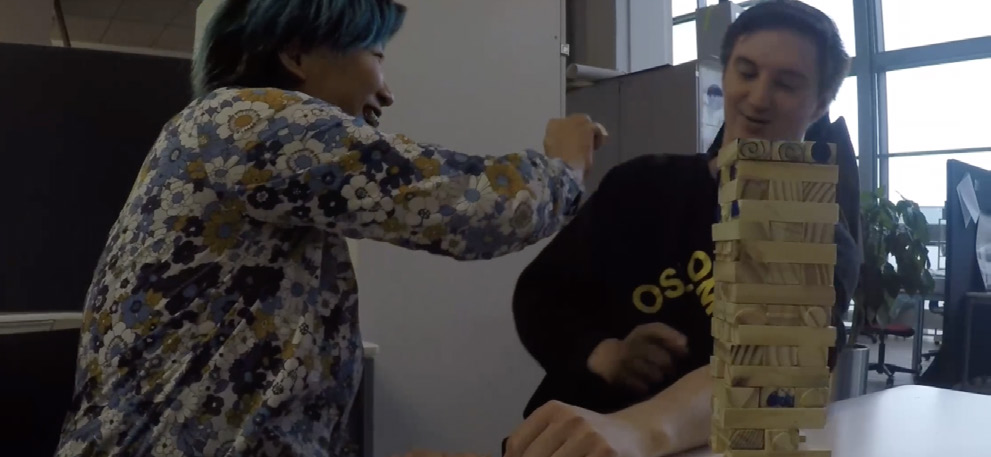
usually happens at the start of the experiments. People were confused “Why do we want to stamp each other”, or refused to stamp or got really nervous. Some got over the discomfort stage and became more engaging while some remained.
Engaging

Some people immediately engaged in the game and stamped on my face while some became involved after few rounds.
Fantasy Play
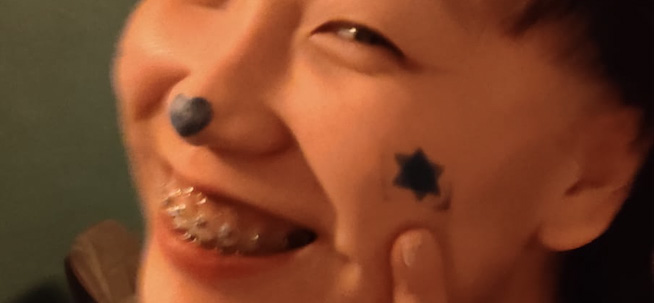
The open-ended patterns of Jenga Stamp fostered fantasy play in the experiments. People get excited when they make a meaningful pattern, “Oh, a lollipop”, “I want to show others this is my cool tattoo”, “Your heart is broken” with a cupid’s arrow, “I am making you a Jewish” with Star of David.
Euphoria
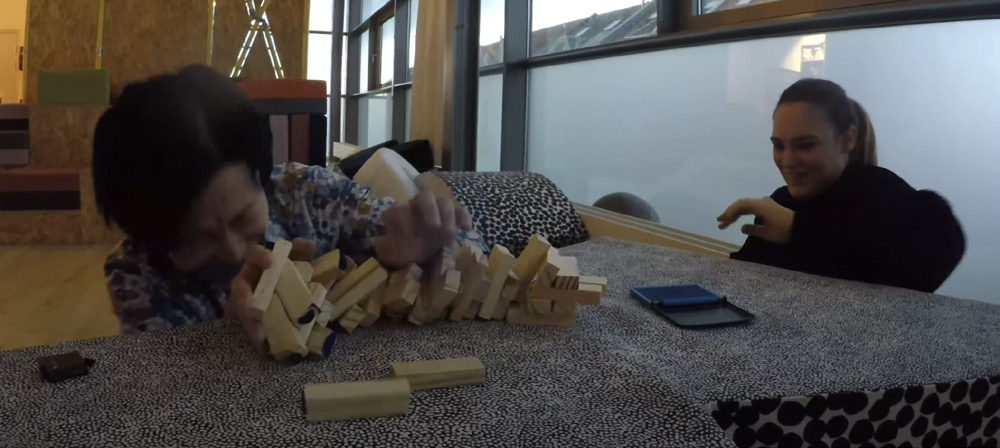
Euphoria is defined as a type of play mood characterised by an intense expectation of silliness in the research from Karoff (2013). It happens when Jenga tower collapse. Some people laughed crazily while some were annoyed at losing the game, some were scared or shocked of the collapse.
Intimacy
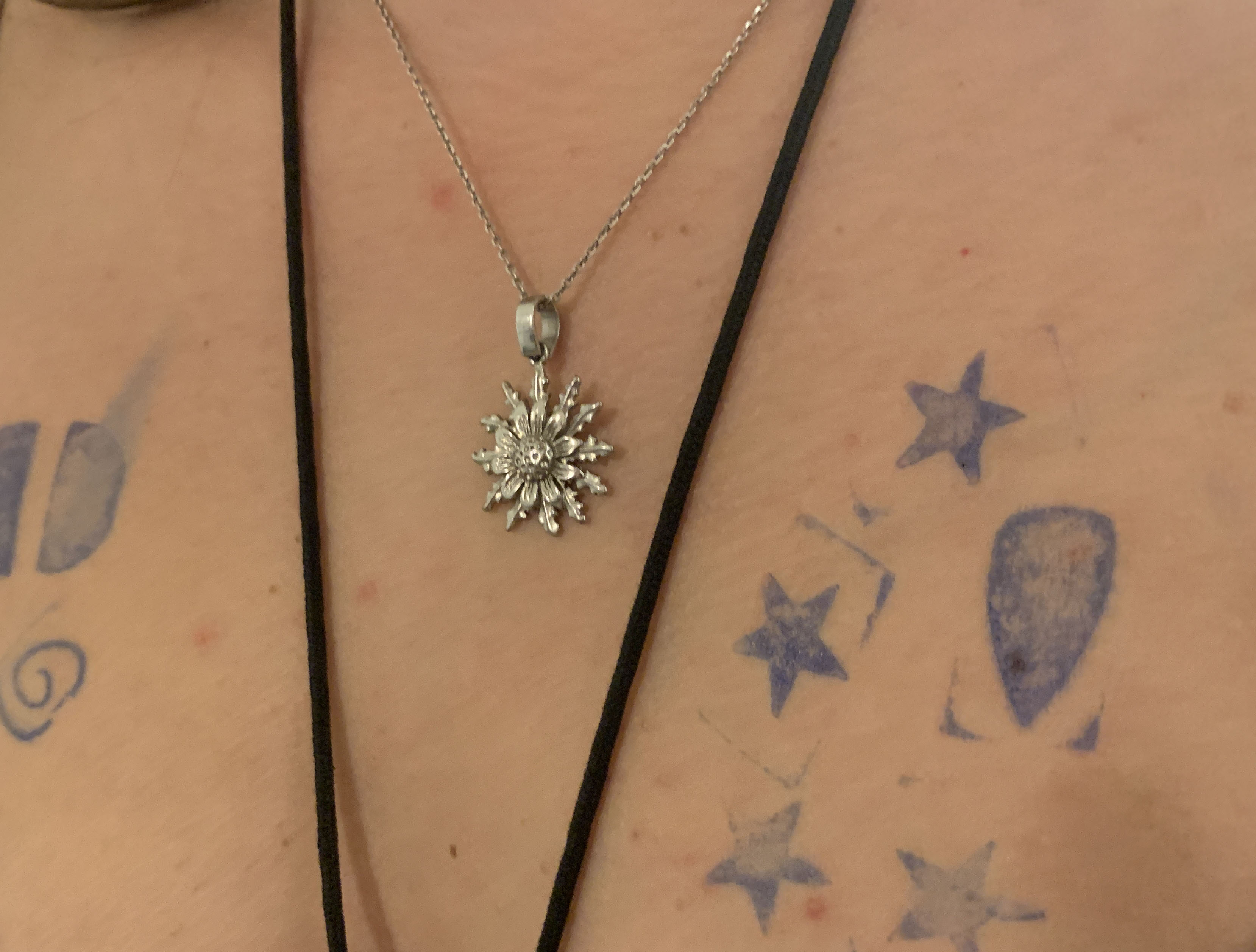
Couples, close friends usually go straight to each other’s face at the first round. There were more laughter, cheeky moves during the play. Intimate people also stamped more on vulnerable areas like eyelid, cheeks, belly and etc.
Fellowship

The sense of fellowship was formed at the end of the experiments. People took selfies, said “Ohhh, we have the similar patterns” when both of us coincidently had a moon shape below a circle, or expressed that we shared a tattooing experience together.
Vulnerability and Intimacy
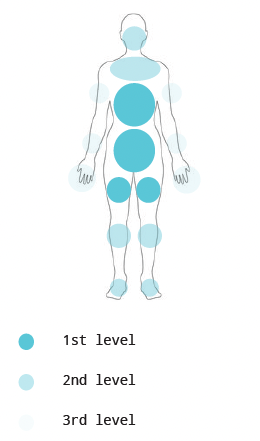
There are different vulnerable levels in our body parts. In the Jenga Stamp experiment, hands and arms are usually the least vulnerable. Shoulders, face, ankles, calf are expected to be more sensitive. The most vulnerable part are usually the areas that are always covered by clothes.
Being vulnerable is uncomfortable and is especially amplified when talking to strangers. When the intimacy increases, the vulnerability decreases.The discomfort phase does not exist when intimate people play with each other. We inferred that because intimate people have already been comfortable with each other and the game is not at a level that makes them feel vulnerable.
We also observed different reactions in different social or spatial contexts. People are less likely to participate after a stressful class, compared to a cosy afternoon in the school. Skin area are less exposed in a cold park than a climbing gym, which influence how people react to the stamping game.
References:
Cipolla, C. (2018). Designing for Vulnerability: Interpersonal Relations and Design. She Ji: The Journal of Design, Economics, and Innovation, 4(1), 111–122. https://doi.org/10.1016/j.sheji.2018.03.001
Karoff, H. S. (2013). Play practices and play moods. International Journal of Play, 2(2), 76–86. https://doi.org/10.1080/21594937.2013.80 5650